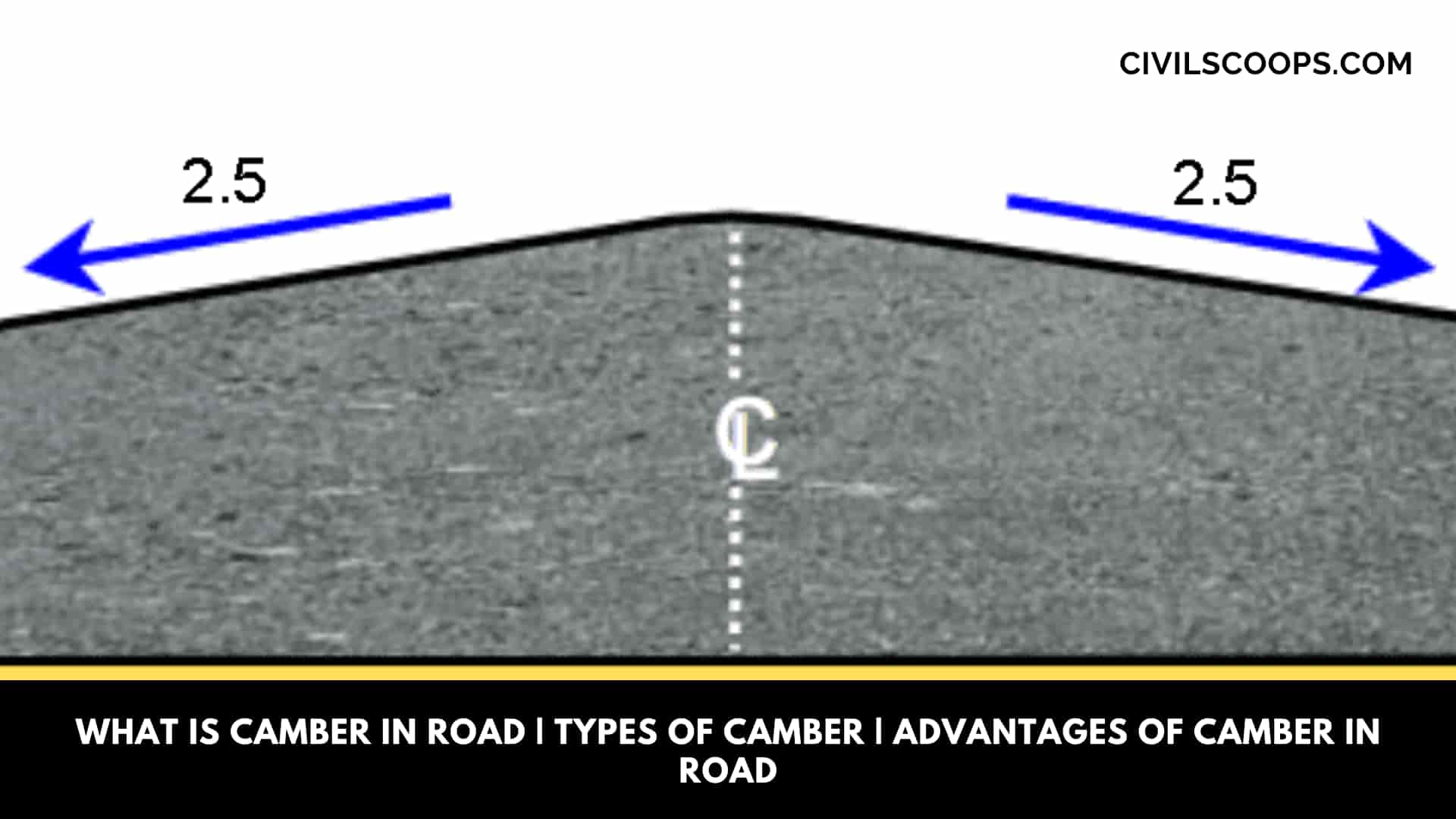
Table of Contents
What Is Camber in Road?
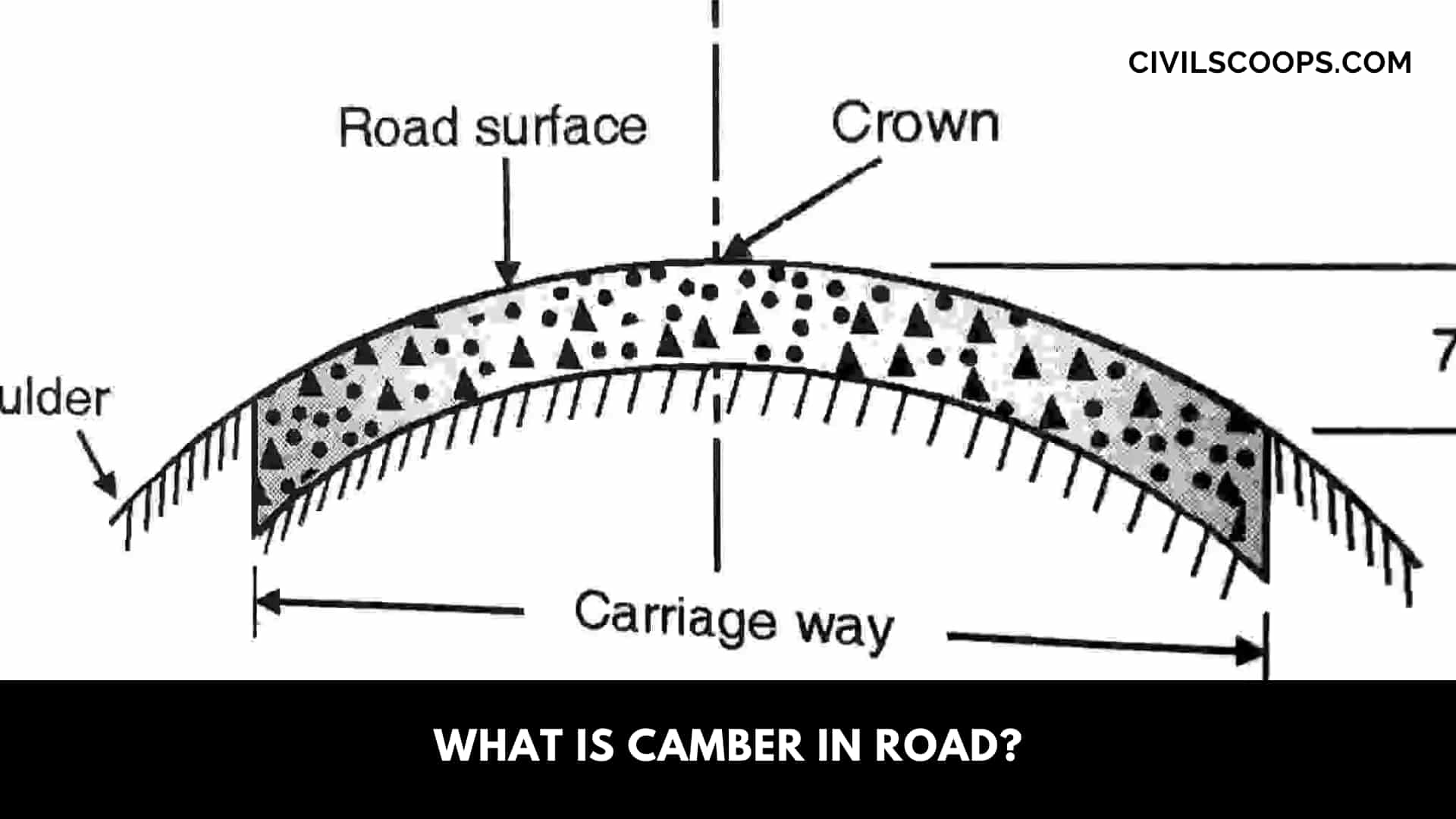
It’s mostly found in the highways the median part of the road surface is elevated with regards to the edges. This slope from the diagonal direction is known as the Camber.
The purpose of the camber is to drain out the rainwater from the road surface around the edges.
Camber is the slope provided to the road surface at the transverse direction to drain off the rainwater out of the road surface. It is also known as the cross slope of the road.
The rate of camber is normally indicated by 1 : n ( 1 in n ) (1 vertical to n horizontal) or in proportions as n % (for instance, 1 in 50 or 2 %).
The design values of cambers are primarily based on the type of pavement and also on the average amount of rainfall in the area. Steep cambers are useful for eliminating surface water.
But they’re not recommended since they will wear down the surface. Normally, cambers of slope 2 to 3% are arranged.
On straight sections of roads, they’re shoulders with higher cross fall relating to that of the carriageway by 0.5%.
Types of Camber
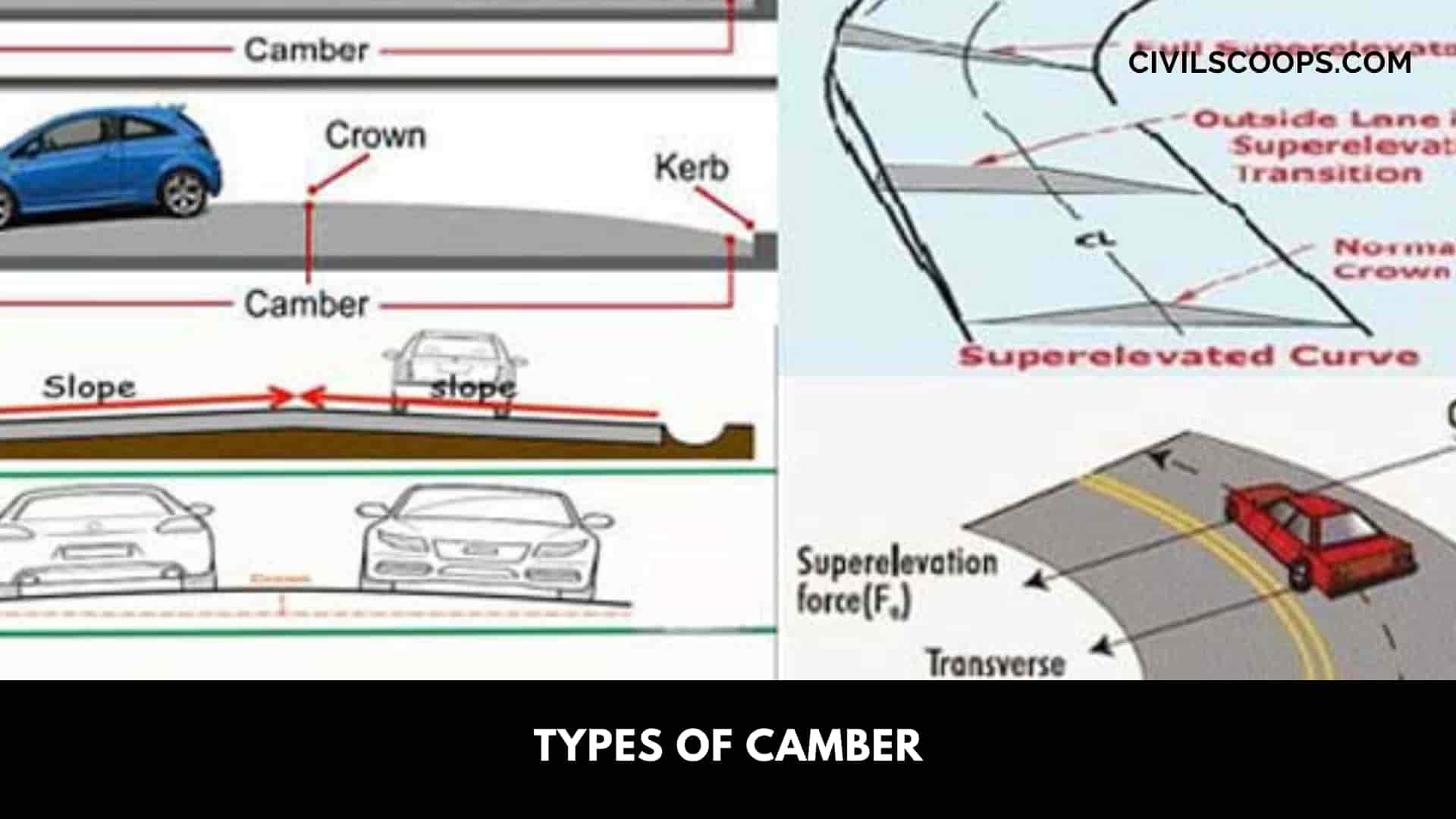
- Composite camber.
- Sloped or Straight camber.
- Two straight line camber.
- Barrel camber.
1. Composite Camber.
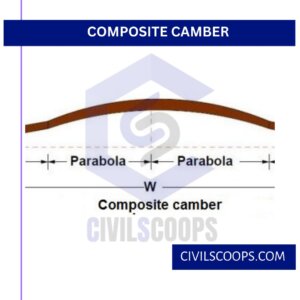
Composite camber might be composed of partly parabola and partly straight line or two straight lines having different slopes.
Generally, the central part of the road is made parabolic and provided with straight slopes near edges. This helps to decrease in intensity of pressure by increasing the contact area of the wheel.
2. Straight Camber or Sloped Camber
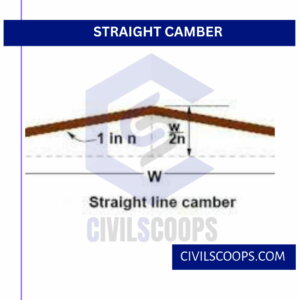
This type of camber is provided by meeting two straight surfaces in the crown. Crown is the central and top most point in the surface of the road.
The edge shape produces inconvenience to the traffic, so it isn’t used in general.
3. Two Straight Line Camber.
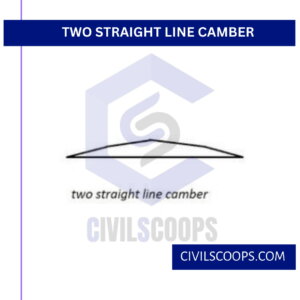
It consists of both straight lines steeper near the edges and flatters near the crown. This type of camber is considered to be the best for Indian roads.
4. Barrel Camber.
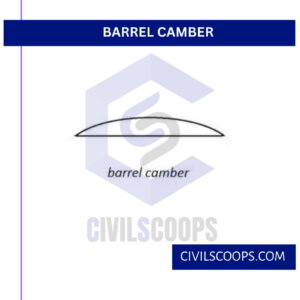
It consists of a continuous curve, either parabolic or elliptical. This type of camber is preferred for roads used by fast-moving vehicles.
Also Read: How to Get Rid of Paint Smell
Why Is Camber Provided In Road?
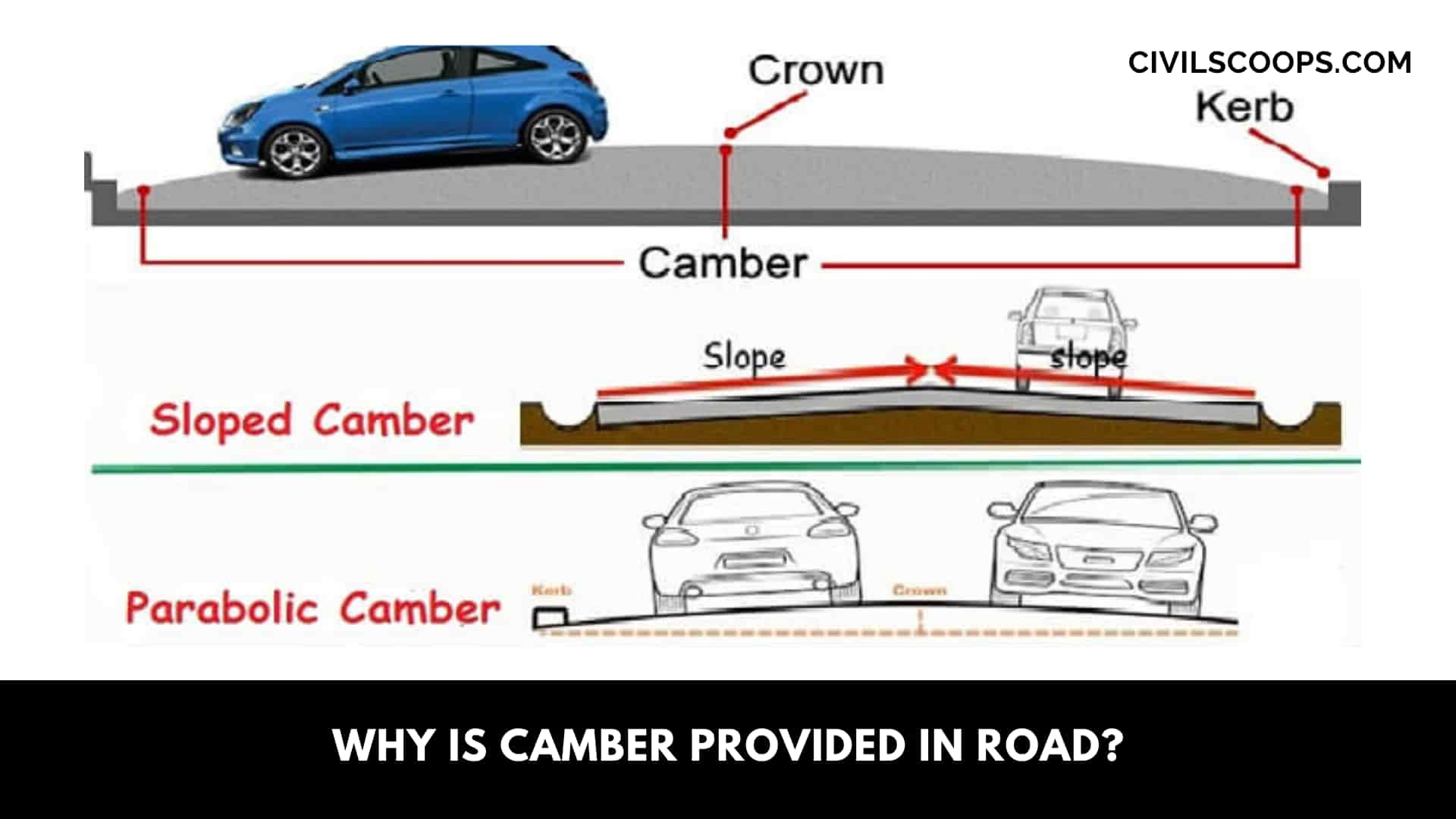
- To protect the road by preventing the entry of surface water to the subgrade soil through the pavement.
- To prevent the entry of water to the bituminous pavement layers.
- To remove the rainwater from the pavement surface as quickly as possible and to allow the pavement to get dry soon after the rain.
Advantages of Camber in Road

This prevents rainwater to accumulate at local shrinkages or depressions and forming water pools around the road surface that are disagreeable to the public as well as to the road structure.
Camber provides quick drainage of rainwater and so saves the foundation course of this road structure from weakening from the percolation of rainwater to it through the road surface.
Method of Providing Camber in Road

Normally, the camber is provided on the straight roads by raising the center of the carriageway with respect to these edges, forming a crown or highest point on the center-line.
At horizontal curves with superelevation, the surface drainage is effected by raising the outer edge of the pavement with respect to the inner edge while providing this desired superelevation.
The rate of camber or cross slope is generally designed by 1 in n, which means the transverse slope is at ratio 1 vertical to”n” horizontal. Camber can be expressed in percentage. If the camber is n%, the cross slope is n in 100.
Recommended Values of Camber in Road For Different Types of Road surface by IRC:
|
Sr. No.
|
Type of Road Surface
|
Range of Camber in Areas of | |
| Low Rainfall |
Heavy Rainfall
|
||
| 1 | Cement concrete and thick bituminous surface | 1 in 60 or 1.7% |
1 in 50 or 2.0%
|
| 2 | Thin bituminous surface | 1 in 50 or 2.0% |
1 in 40 or 2.5%
|
| 3 | Water bound macadam and gravel pavement | 1 in 40 or 2.5% |
1 in 33 or 3.0%
|
| 4 | Earth Road | 1 in 33 or 3.0% |
1 in 25 or 4.0%
|
A drawback of Providing Excessive Road Camber Height
- It reduces the road width as everyone will try to move in the middle of the road.
- The road will wear and tear on the edges.
- The passengers feel they unbalance and discomfort during the journey.
- Chances of accidents will increase.
Camber in Highway
- Camber: Camber is the transverse slope provided to the road surface for the drainage of the rainwater for the better performance of the road. Camber can be written as 1 in n or x%.
- Parabolic Camber : Parabolic camber is provided by providing a parabolic shape to the surface of the road.
Types of Camber
- Traditional Camber: This is known as traditional camber because once upon a time pretty much all snowboards were made with this profile.
- Continuous Rocker/Reverse Camber: This has many names – rocker, reverse camber, anti camber, banana and continuous rocker come to mind. But essentially it is the opposite of traditional camber.
- Flat Camber: Just like it sounds this profile has no camber or rocker – it’s flat between the contact points.
- Hybrid Profiles: Like the name suggests, hybrid profiles are a mix of camber, flat and rocker. There are heaps of different combinations of this employed by snowboard manufacturers.
What Is Camber in Road?
Camber is a slope provided on the road surface in the transverse direction to drain out the rain water from surface to avoid skid of vehicles and pavement damages. Camber is again one of the most important element of a road pavement which have lot’s of advantages for longer durability of road surface.
What Does Camber Do?
Camber is used to distribute load across the entire tread. Improper camber can make the tire wear on one edge and may cause the vehicle to pull to the side that has the most positive camber.
Like this post? Share it with your friends!
Suggested Read –